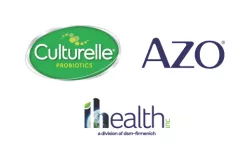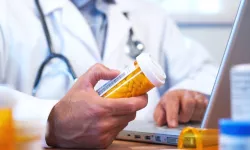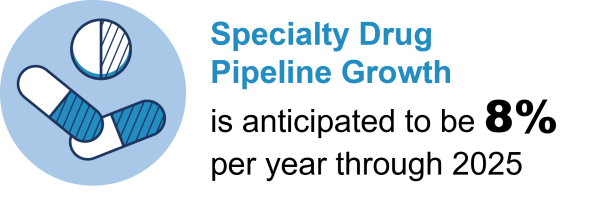Partner Voice

In June of 2023, Techdow USA Inc., a division of the Hepalink Group, successfully launched Enoxaparin Sodium (Enoxaparin) in multiple strengths of pre-filled syringes. Techdow USA’s Enoxaparin is critically needed and will be used primarily in the outpatient setting to treat and prevent harmful deep vein thrombosis and pulmonary embolisms. Techdow USA’s parent company, the Hepalink Group, is a global leader in naturally extracted active pharmaceutical ingredients (API) and finished drugs that sources from an extremely diverse and robust supply chain network.
Techdow USA sources materials from North America, Europe, and Asia. Additionally, Hepalink Group owns and operates Scientific Protein Laboratories (SPL), the largest producer of Heparin API in North America. SPL’s API business was created by Oscar Mayer in the 1970s and is a global leader in naturally extracted API production. The Hepalink Group has expanded their worldwide offerings to now include manufacturing and marketing of their high-quality and reliable finished drug products in the USA.
Techdow USA launched Heparin Sodium injection in 2022 followed by their next launch of Enoxaparin Sodium injection. Both Enoxaparin and Heparin Sodium are a complement to the Hepalink Group’s sophisticated vertically integrated products supply chain that provides increased supply reliability, competitive pricing, and robust quality.
The Hepalink Group, a global supplier to the market and trusted partner to the largest pharmaceutical companies, is delighted to provide our customers with the opportunity to directly access the market’s largest global supply of our finished drug products, Enoxaparin and Heparin. Techdow USA’s products provide patients and customers the supply reliability they demand and deserve
Techdow USA is a high-performance pharmaceutical company that is committed to quality and reliability to our patients and customers. We develop, manufacture, and sell critical FDA approved products such as Heparin and Enoxaparin Injection for use in hospital and clinical settings. We are vertically integrated in raw materials and can deliver hard to source products at a competitive price.
Techdow USA is among the fastest growing companies in our industry and are always looking for ways to improve and set a new high-performance standard. We are passionate about making a difference for patients and bringing effective medicines to market.

We envision a world where women are free to be open and honest about their intimate health, because women care about their health, and they know there is no issue too small to tackle—but they don’t always have the right tools. We believe in providing those tools so women can live life uninhibited—and that means breaking the taboos that surround women’s health. This is not just for AZO® users and not just for women, but also to enrich our society. When everyone is supported, healthy and safe, our world is better.

Seven out of 10 pharmacies are understaffed1. When a pharmacy is understaffed, every aspect of the business suffers: employees become overburdened, lines are longer, and customer service deteriorates, resulting in patient and employee churn.
Does this situation sound familiar?
Fortunately, there's a more sustainable solution than the continuous cycle of hiring and training staff – and you’re already familiar with it. Digital transformation, the adoption of online and integrated technology, can bridge the gaps created by staffing shortages to streamline workflows, enhance efficiency, and increase staff capacity.
While the concept sounds nebulous and overwhelming, we’ve identified the most impactful technologies to help you get started on your journey toward modernization.
No. 1: Streamline Transactions with Digital, Self-Service Payments
As a consumer, you use your phone to pay for goods and services nearly daily. From curbside pickup to third-party delivery apps, 82% of Americans use digital payments regularly2.
However, pharmacies and healthcare have been slow to adopt self-service payments due to regulatory concerns. But as dedicated healthcare payment providers have entered the space, it's now an area ripe for transformation and efficiency gains.
When payments are required to be made at the counter, patients arrive surprised by Rx prices, fumbling with payment methods, and asking pharmacists to update billing information, resulting in lengthy and frustrating transactions. At the most critical point in the patient's journey, the pharmacist is spending more time with the patient on operational activity rather than clinical engagement. No wonder pharmacies are the second most common place where Americans spend the most time waiting in lines 3.
Providing digital, self-service patient payments via text or email offers patients convenience while saving pharmacy staff time and effort4. Patients can pay how they want, when they want, and where they want, while pharmacists can focus on the core elements of their job. When patients arrive to pick up their prescriptions, pharmacists can verify their identity, see proof of payment with a QR code from the patient, collect the necessary signatures, and offer counseling with little to no billing support required.
Instead of a 10-minute wait time and an ineffective interaction at the register, the pharmacist and patient benefit from shorter, yet more effective interactions.
No 2.: Eliminate Manual Processes with a Mobile Point of Sale (POS) System
Is your staff wasting time using pen and paper? You're not alone. 71% of providers still use manual processes for collecting payments, signatures, and identification5. This pulls pharmacists and technicians away from their core duties, increases the likelihood of errors, and compromises security.
Manual pen and paper processes are most common during mobile transactions, like meds to beds or curbside pickup, because most point of sale (POS) systems have been reliant on on-premise, hardware-based solutions. But advancements in cloud computing and mobile devices have enabled technology providers to offer mobile, cloud-based systems that work on tablets and laptops without bulky servers.
With a mobile POS that’s integrated with your pharmacy management system (PMS), staff can capture all necessary patient and payment information as the transaction is being conducted6. This enables revenue-driving programs like meds to beds, drive-thru, curbside pickup, and line busting without adding extra workload for your staff. No more frustrating tasks like tracking down signatures with paper, spending hours uploading and scanning, or worrying about accuracy and compliance.
No. 3: Quickly Locate Prescriptions with an Automated Will Call System
In 2021, over 6.5 billion prescriptions were dispensed in the U.S.7 With 66,000 pharmacies in the U.S. that year, we can roughly estimate that each pharmacy handled an average of 98,000 prescriptions annually8.
Think about how long it takes for your staff to find a patient's prescription during pickup. Even if it only takes a minute, that's 98,000 minutes—or 1,633 hours (about 2 months)—wasted each year.
An effective, low-cost way to reduce this time is through an automated will call system. These systems use lights and/or sounds to help pharmacists quickly locate prescription bags. When dispensing a prescription, the pharmacist scans the prescription and bag before hanging it on the rack or in the refrigerator. When the patient arrives, the bag lights up or makes a noise, allowing staff to locate it instantly, reducing wait times from 10-30 minutes down to seconds.
While pharmacy automated will-call systems aren’t necessarily new, a lighted will-call system that integrates into the point of sale (POS) is. This helps streamline vendors and applications leveraged by pharmacy staff for greater efficiency.
Reclaim Time to Achieve More with Less
Imagine a pharmacy where your team can focus on what truly matters while experiencing more manageable workloads. Alleviating staffing shortages and providing better patient and employee experiences starts with technology. By doing the work now to modernize your most time-consuming processes, your staff, patients, and bottom line will benefit for years to come.
Self-service payments, mobile POS systems, and automated will call systems are just the beginning. What innovative solutions will you explore next?
Resources
- Untapped opportunities for health system pharmacies | McKinsey (mckinsey.com)
- New trends in US consumer digital payments |McKinsey (mckinsey.com)
- Consumer Survey: The State of Waiting in Line (2023) | Waitwhile
- Pharmacy Payments Pain Points: How to Avoid Them | Emporos
- 2024 Trends in Healthcare Payments Annual Report | J.P. Morgan (jpmorgan.com)
- mPOS: A Patient-Centered Solution | Emporos
- Total drug prescriptions dispensed U.S. 2009-2022 | Statista (statista.com)
- U.S. National Pharmacy Market Summary | IQVIA (onekeydata.com)

Long Grove Pharmaceuticals, an experienced and innovative pharmaceutical company specializing in complex generics and proprietary 505(b)(2)s, leverages its heritage of success through in-house research and development from parent company Capstone Development Services. Long Grove distinguishes itself in the generic pharmaceutical market with innovative approaches encompassing People, Products, and Processes. This includes in-house R&D for differentiated generics supported by Capstone, dedicated supply chains to introduce new supply to the U.S. market, and a seasoned leadership team fostering collaborative partnerships with customers and suppliers. Differentiated generics are delivered through proprietary products developed via the 505(b)(2) pathway, aided by rapid approvals and process efficiencies. Supply chain continuity and reliable partnerships further reinforce Long Grove's commitment to providing novel solutions to the healthcare sector.

The pharmacy supply chain is extremely complex, and the stakes are high for healthcare organizations. It falls on the shoulders of health system and hospital pharmacy leaders, along with their teams, to not only prepare and dispense drugs accurately and safely, but also manage all the processes and requirements related to drug products from procurement through point of use.
Discover the challenges keeping health system and pharmacy leaders up at night, and how U.S. health systems and hospitals are addressing them through supply chain management optimization.

Long Grove Pharmaceuticals, an experienced and innovative pharmaceutical company specializing in complex generics and proprietary 505(b)(2)s, leverages its heritage of success through in-house research and development from parent company Capstone Development Services. Long Grove distinguishes itself in the generic pharmaceutical market with innovative approaches encompassing People, Products, and Processes. This includes in-house R&D for differentiated generics supported by Capstone, dedicated supply chains to introduce new supply to the U.S. market, and a seasoned leadership team fostering collaborative partnerships with customers and suppliers. Differentiated generics are delivered through proprietary products developed via the 505(b)(2) pathway, aided by rapid approvals and process efficiencies. Supply chain continuity and reliable partnerships further reinforce Long Grove's commitment to providing novel solutions to the healthcare sector.

VPL TrajectRx empowers outpatient pharmacies by giving them the cloud-based shipping, tracking and compliance solution they need to build cost-conscious, stronger, and smarter last-mile operations. Created for pharmacists by pharmacists, our clinically minded platform gets prescriptions out the door, tracks and traces them to their destination, communicates shipping updates to patients and staff, and compiles necessary reporting for proof of delivery. By minimizing distribution errors, enhancing operational efficiency, and reducing time spent on the phone, TrajectRx ensures a streamlined and effective pharmacy workflow.

i-Health, Inc. is proud to support clinical research and advance scientific knowledge around probiotics, including a
recent investigator-initiated trial conducted by clinician researchers at Duke University using Culturelle® probiotics.

The practice of specialty pharmacy is increasing, but what exactly does it mean?
Any drug can be considered “special” due to its complicated interactions with the human body. However, advanced technology drives drug development into a new domain.
New “specialty drugs” treat rare diseases, but they come with high costs, varying drug formulations, strict stability rules, and increased patient monitoring.
In fact, many community pharmacies do not have the ability, capacity, or personnel to dispense specialty medications.
That’s where specialty pharmacies come in, equipped to handle the storage, shipping, counseling, pricing, and insurance claims surrounding specialty drugs.
Specialty Pharmacy Market Growth
According to the Assistant Secretary for Planning and Evaluation, specialty pharmacy drug spending has increased by 43% from 2016 to 2021, reaching a total of $301 billion. However, only 2% of the population utilizes these medications, demonstrating the cost involved with specialty drugs.
The number of specialty drug prescriptions being filled in a non-retail pharmacy setting has increased by 40%, illustrating the growing importance of specialty pharmacies.
Specialty pharmacy has experienced significant growth in the last 10 years and is predicted to continue growing by 8% annually through 2025.
Exploring the Specialty Drug Pipeline
According to Ray Tancredi, the divisional vice president of Walgreens, 39 new drugs have the potential for FDA approval by the end of 2023, with 28 of them being specialty medications.
Among specialty drugs in clinical trials, there are 39 injectables, 37 oral medications, one inhalation drug, and one topical formulation.
These trial medications focus on the following specialty drug categories:
- Rare diseases
- Oncology
- Gene and cell therapies
- Biosimilars


The Rise of Biosimilars
Another factor to consider is the increase of biosimilars as biological drug patents are starting to expire. Biosimilar drugs closely resemble their original counterparts.
In 2021, the most used specialty drug was Humira. However, by the beginning of 2023, the market welcomed nine biosimilars for Humira, making the drug more affordable and easier for patients with arthritis and plaque psoriasis to obtain.
The expiration of patents may drive spending in the biosimilar market to reach $36 billion by 2024.
Despite increased spending, the widespread availability of biosimilars could potentially save $100 billion in costs for biologics within five years. As a result, patients everywhere will have better access to life-saving medications and therapies, further increasing prescription volume in specialty pharmacies.
Implications of Specialty Pharmacy
Specialty drugs often treat complex, chronic conditions that require timely medication to maximize patients’ outcomes. In this case, accurate deliveries are a critical component of patient care as six in 10 adults in the United States have a chronic disease, according to the CDC, while 4 in 10 in the country have two or more.
As the volume and spending are bound to increase, specialty pharmacies must be equipped with advanced technology to ensure a smooth and efficient shipping workflow.
In addition, the shift to at-home care means shipping prescriptions to patients’ homes has taken on even greater importance. This, coupled with the rapid pace of pharmacological innovation, means there are more prescriptions to ship than ever before.
Embracing the Future of Specialty Drug Distribution
Here at VPL, we are determined to provide clinically-minded solutions to the ever-changing pharmacy industry.
To that end, we created our prescription distribution, tracking, and compliance solution to ease shipping worries and increase transparency surrounding specialty medication deliveries.
For more information about how our software can help your pharmacy navigate the growth in specialty pharmacy, visit www.getvpl.com/pharmacy-solutions. This original blog post is also available at https://getvpl.com/growth-in-specialty-pharmacy-blog/.

Essential Medicine Shortages have become commonplace throughout the supply chain. This year ASHP reported that 99% of hospital pharmacists encounter more than one drug shortage a day. 2023 was a dire year for drug shortages. Patients from around the country faced a 10 year high of the number of medicines in shortage and they needed help.
A bankruptcy, a quality assurance event, and a tornado caused major disruption, closures, and impact at 3 separate manufacturing plants. These events spotlighted the urgent need to build resiliency and collaboration into the entire supply chain. The pharmaceutical supply chain is fragile. Any setback or disruptions can cause a ripple effect, severely impacting patients. A broken and brittle supply chain cannot fill the physician's hands that save the lives of our people. During each one of these events, Angels for Change was there fostering patient first
solutions, collaboration, transparency, and redundancy to mitigate the shortage and create the resilient healthcare supply chain our citizens deserve.
Angels for Change (A4C) is the only 501c3 volunteer supported, patient advocacy organization on a mission to end drug shortage through advocacy, awareness, and a resilient supply chain. Laura Bray founded A4C in 2019 after her own child faced three life-saving drug shortages in nine months of pediatric cancer treatment. Each day, A4C advocates on behalf of patients, physicians, and pharmacists in a life-saving drug shortage, while building relationships with members of the pharmaceutical supply chain and policy makers to end drug shortages. We take direct calls from those in a shortage crisis and connect them to supply through our Inventory
Sharing Network. We answer every call. We leave no patient behind. This work has given us a unique view into the supply chain. While it is brittle and broken, it is also filled with supply chain experts and front line care teams willing to perform herculean efforts to treat their patients and save lives. This supply chain is made up of so many champions that can and will unite to end this crisis.
In May of 2022, founder Laura Bray attended Health Connect Partners as a panelist to share about the drug shortage crisis. She discussed real patient drug shortage stories and practical solutions to end drug shortages, such as the launching of the End Drug Shortages Alliance (EDSA) and project PROTECT.